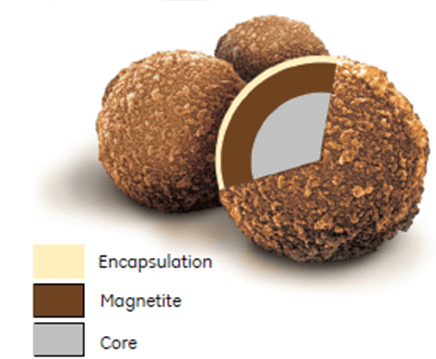When it comes to magnetic beads, or magbeads, people in life science industries are spoiled for choice. You can use streptavidin-coated or streptavidin-blocked beads. You can use beads with smooth coatings or textured coatings. You can buy beads in kits or even have custom beads made just for you. So how do you know which is best for you?
When choosing magbeads, you could be tempted to focus only on the surface chemistries and how sensitive and specific they are. After all, if your target doesn’t bind to the bead surface, the bead isn’t very useful. But other factors are also important to consider. Size is one of those factors.
Magnetic bead manufacturers provide beads in sizes ranging from < 1 µm (micron) to around 500 µm in diameter. Some manufacturers offer just one or two bead sizes while others offer several sizes and even offer different-sized beads with the same chemistries. Bead size is not often a top consideration when people select beads, and sometimes people simply pick the size that they’ve always worked with before. So why does size matter?
Magbead physical properties that depend on size
First, the physical properties of the bead changes. If you remember your high school geometry class, you know that the surface area of a sphere is proportional to the square of the radius, so the surface area of beads increases as their size increases. However, a sphere’s volume is proportional to the cube of the radius. Thus, larger magbeads have a lower surface-to-volume ratios. So, you might choose bigger beads to get more surface area per bead, or you might choose smaller beads to have a higher surface area-to-volume ratio.
The density of beads also changes with size even when the beads are built with the same internal structure. For example, Sera-Mag™ magbeads have a polystyrene core covered with a magnetite layer, then a polymer layer, and finally the surface is coated with various chemistries to bind to different targets (Fig 1). Changing the diameter of the bead from 1 micron to 3 micron changes the proportions between polystyrene, magnetite, and polymer. As a result, the densities of the two beads are not the same. The density of magbeads can affect how the beads behave in a suspension.

Fig 1. The layers of Sera-Mag™ magnetic beads
Aim for your target
Compared to a 1-micron bead, a 3-micron bead will have a stronger attraction to a magnet because it has more magnetite in it. The larger bead will also travel faster through viscous liquids. As a result, the larger bead will have a faster time to result (TTR). Knowing these facts, you might think that bigger is always better, but that’s not true. In general, you want to match your bead size to your target size. Use larger beads for larger molecules such as proteins and cells and smaller beads for smaller molecules such as nucleic acids.
Larger beads also settle out of suspension more quickly. Faster settling is not usually desirable. You want the beads to stay in suspension so that they are more available for your target to bind to them. And no one really wants to add more mixing time to their protocols just to keep beads in suspension. But then, for some applications a fast settling rate is not problematic.
If it ain’t broke…
Now let’s be realistic. Sometimes you don’t want to give much thought to magbead size. You may be used to working with a particular size or you may already have a complete assay developed using one size of magnetic beads. Why mess around with different sizes? With so many components in your protocols, the ability to keep one variable constant is welcome. And, if you have a finished diagnostic test, you wouldn’t want to go back through evaluation and regulatory hoops.
More sizes, more flexibility
In conclusion, having more sizes gives you more flexibility for applications in molecular, biology, genomics, and immunoassays, so it really just depends on what you need to happen, or not happen! Sticking to the magbead size that you’re used to may feel the most comfortable, but a smaller or larger bead might be better for your application. Speak with a member of our Diagnostics team for guidance on selecting bead sizes. If you can’t find the bead size you want in our portfolio, you can have beads customized to meet your needs.